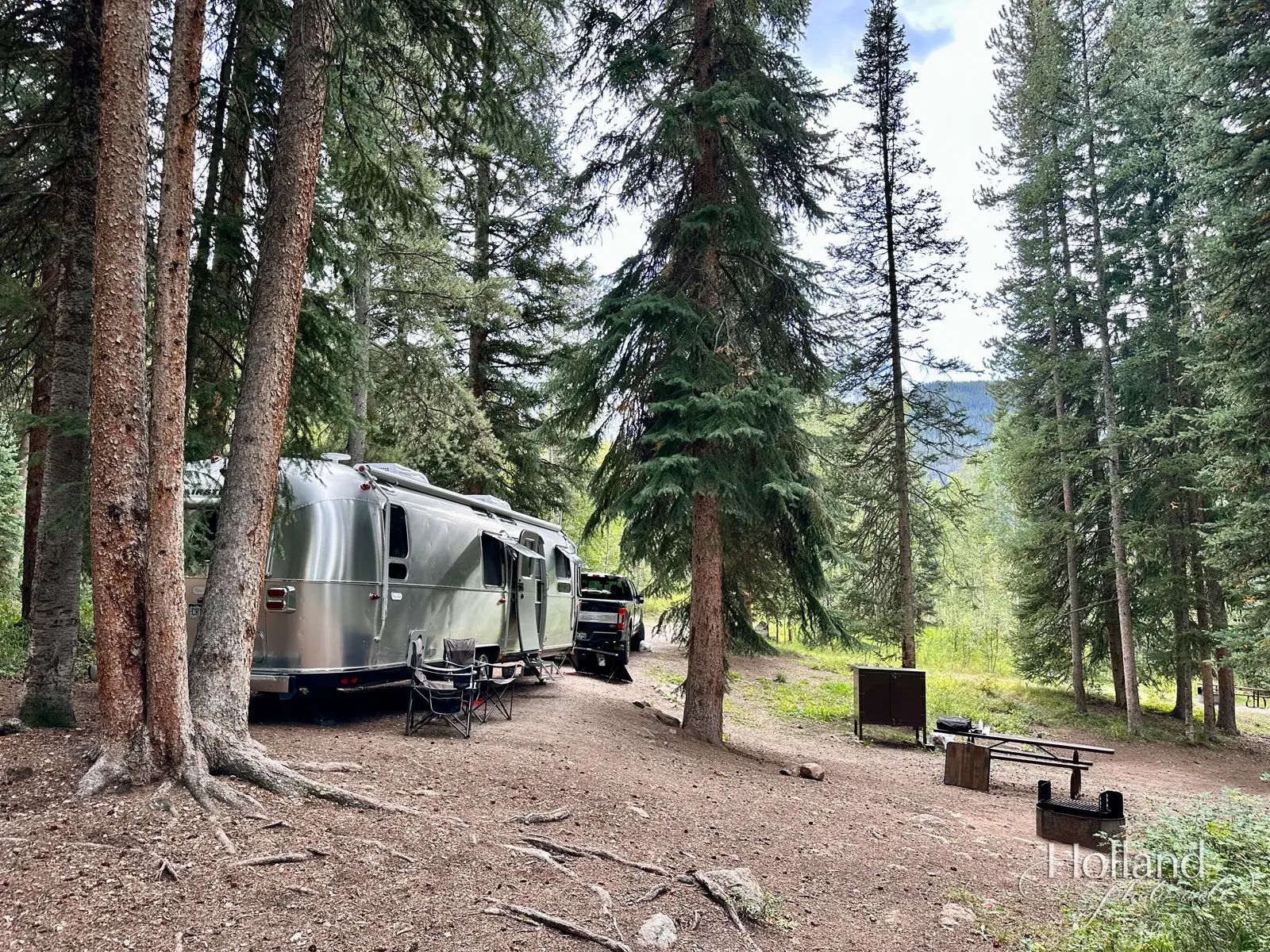Our first season with Ellie we camped in a gorgeous, tree-filled spot in Gore Creek in the White River National Forest near Vail, Colorado in early September, just as the mornings were getting brisk and the trees thinking about their winter break.
At this point we’d had some practice boondocking, but this was the first time out where we had neither cell reception nor a clear sightline through the tall pine trees for Starlink to reach a satellite. Plus, given all the tree cover and cloudiness anyway, it all made for a tricky time generating enough electricity to work and generally do our thing. Not to worry though, as we had a brand new Champion 2500w generator in the back of Carl, ostensibly ready to go.
Nevertheless, we could collect just enough photons from our portable Renegy 200w solar panel, combined with the 4 Battle Born LiPO4 batteries to get us energized through until our departure.
Almost.
The morning we were set to leave, I woke up early, realizing everything was just a little quieter than usual. Looking at the Victron Cerbo GX battery monitor, I realized our lithium batteries were fully expended, and we had no onboard power. While it made for a chilly morning in the mountains, it also made it tough to flush the toilet because it was of the macerating variety (meaning it needed electricity to run the gears), there was no water supply to the sink because the water pump was electric, but more importantly, we couldn’t move the motorized hitch jack up or down.
Still, we had the generator, right? No problems.
I pulled it out of the truck bed along with its propane regulator, the 20-30a adapter, 30-50a adapter, and 50a power cable to connect to Ellie. First I connected it to our onboard LP connection, intended to supply grills, etc., but could not get the generator to start (it’d turn over a couple of times, but never sustain combustion). Wondering if maybe there was an issue with the LP connection, I drove into town to pick up a 20lb propane tank and hooked the generator up to that.
More of the same.
At this point half of my mind is starting to freak out a little because I wasn’t sure how we’d lift the jack to connect Ellie to the truck without power, and the other half was trying to open up to other solutions. I’d read that the 7pin connector between a tow vehicle and the RV can trickle-charge batteries (about 0.5a, compared with 10a with a 200w solar panel on a sunny day), and figured I’d give it a try.
After a half-hour idling and trickle-charging the batteries, I tested the jack and it moved. Success! So I ran the truck for another half-hour and was able to move the jack exactly where needed to hitch it to Carl so we could vacate our site. Once we got out of the trees, the roof-based solar panels could collect enough to charge the batteries back a bit at a time. Plus, we could now flush the toilet.
During all this, I finally remembered Airstream supplies a backup wrench for moving the hitch jack up and down manually, so another solution if need be.
—
Since it was our first season out, some things took priority over some backup preparation, etc. So I never made time to prime the generator and make sure it could supply power. Big reminder for me on this one: Test the systems you might rely on before you need them. Of course I knew this principle but didn’t prioritize it.
Won’t be making the same mistake again.




